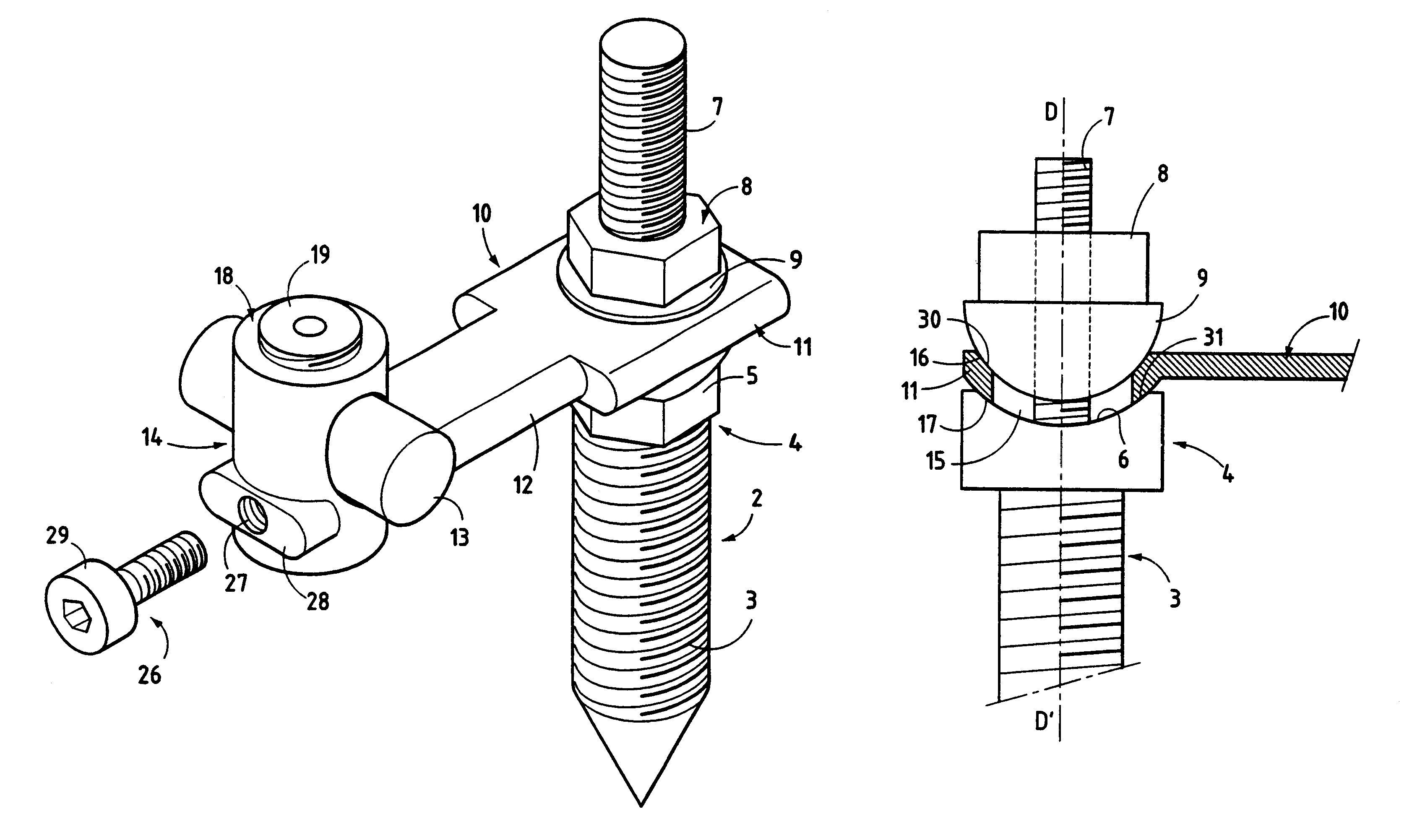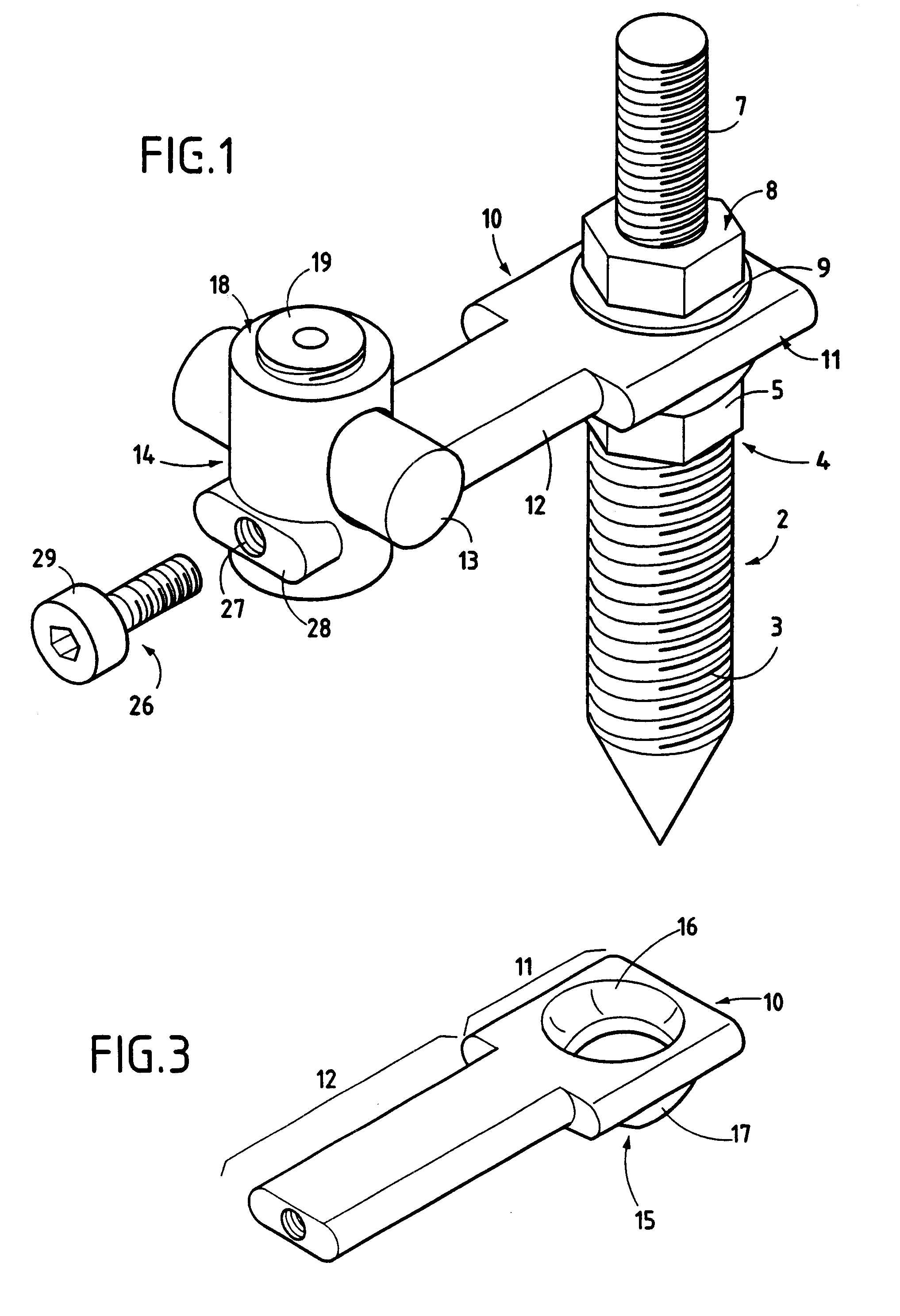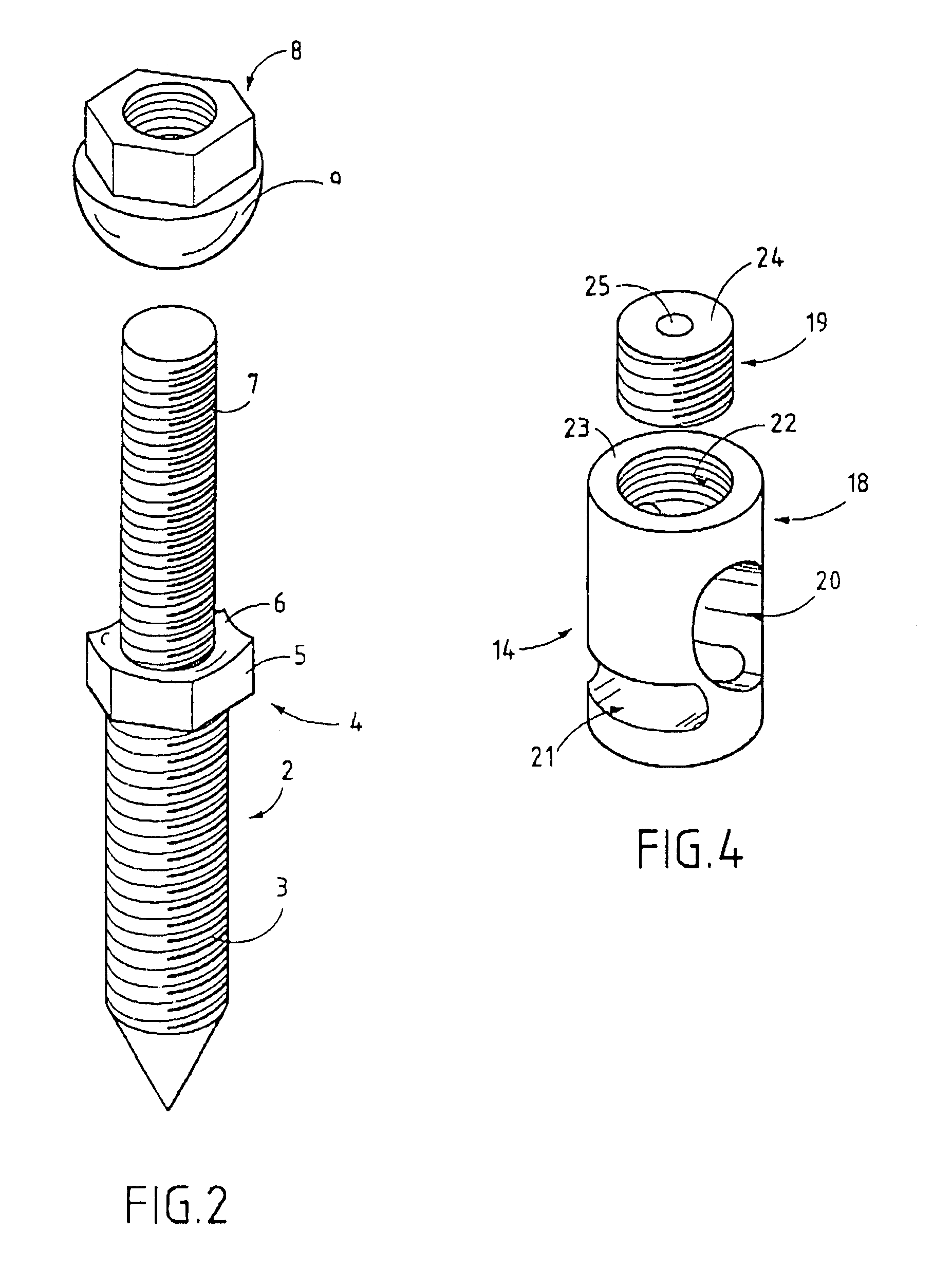Connection device for osteosynthesis
a technology of connecting device and osteosynthesis, which is applied in the field of connecting device for osteosynthesis, can solve the problems of increasing the amount of handling that the surgeon needs to perform, increasing the length of time required to install the device, and increasing the size of the connection device, so as to reduce the size of the locking piece, the risk of disconnection or changing their respective positions
- Summary
- Abstract
- Description
- Claims
- Application Information
AI Technical Summary
Benefits of technology
Problems solved by technology
Method used
Image
Examples
Embodiment Construction
Arthrodesis is a surgical technique which consists in fusing together two bones of a diseased joint in order to prevent relative movement therebetween. In arthrodesis of the spine, this technique serves to fuse together two or more adjacent vertebrae. It requires said vertebrae to be fixed together in temporary, or even permanent manner by suitable surgical instrumentation. Conventionally, the instrumentation comprises screws for securing to a pedicle or to a joint, and a vertebral support rod which is generally a very stiff metal rod for holding the segment of spine in question in a determined configuration. The instrumentation also has connection means for locking the relative position between the pedicle screws and the vertebral support rod. Such instrumentation is known, in particular from document EP 0 425 783.
In the invention, the pedicle screw 2 presents a special structure having a first threaded portion 3 at its bottom surmounted by a head 4 with flats 5 and a curved flank ...
PUM
 Login to View More
Login to View More Abstract
Description
Claims
Application Information
 Login to View More
Login to View More - R&D
- Intellectual Property
- Life Sciences
- Materials
- Tech Scout
- Unparalleled Data Quality
- Higher Quality Content
- 60% Fewer Hallucinations
Browse by: Latest US Patents, China's latest patents, Technical Efficacy Thesaurus, Application Domain, Technology Topic, Popular Technical Reports.
© 2025 PatSnap. All rights reserved.Legal|Privacy policy|Modern Slavery Act Transparency Statement|Sitemap|About US| Contact US: help@patsnap.com



